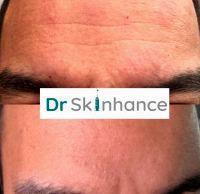Where Can Botox Be Used On The Face?
Botox- areas of face that can be treated
Botox- areas of face that can be treated cosmetically
– Frown lines ( between eyebrows- “Angry 11”)
– Crow’s feet (sides of eyes)
– Forehead creases
– Brow lift (to lift lateral eyebrows)
– Under eyes
– Bunny lines
– Drooping nasal tip (to raise tip of nose)
– Nasal flare (reduce flaring nostrils)
– Gummy smile ( to lower upper lip when smiling)
– Chin dimples (“Orange peel”/”Golf ball” chin)
– Drooping corners of mouth (to lift corners of mouth)
– Neck bands. (Ritu Malhotra, MD, Cleveland Plastic Surgeon)
Botox for the “Weathered Face” (Glogau level 3&4)
Individuals with “wrinkles at rest” over the entire face generally remain good candidates for neuromodulator (Botox/Dysport/etc) therapy, especially around the eyes and glabella regions.
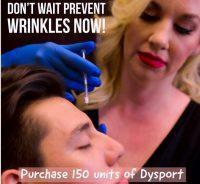
150 Units Of Dysport
Injections here will raise the brows and smooth the periocular skin. (Eric Rosenberger, MD, Austin Otolaryngologist)
Not all wrinkles can be treated with botox
Botox Cosmetic, Xeomin and Dysport, the three FDA approved botulinum toxins, are designed to treat the wrinkles caused by muscle movement. Areas commonly treated include the frown lines between the eyebrows, the crow’s feet next to the eyes, forehead lines, upper lip lines, chin dimpling, and neck lines.
Having said that, there are many times when botulinum toxin is not the answer. Forehead lines cannot be erased with toxin if the patient relies on the forehead muscles to keep the eyebrows elevated. To treat those would risk creating heavy brows.
Lines that extend from the sides of the eyes down the cheek are caused by the cheek lifting rather than the muscles around the eye squeezing so they aren’t good targets for toxin. And not all necks and marionette lines are good targets.

BOTOX Can Be Used Very Effectively
Areas like the upper lip and chin must be treated carefully to avoid affecting the smile or speech. This is why botulinum toxin is most often used in combination with fillers and with lasers and devices.
For example, using fillers to replenish lost volume and improving the skin surface with laser resurfacing may reduce the amount of toxin needed and improve the results that can be achieved. (Heidi A. Waldorf, MD, New York Dermatologist)
The many uses of Botox Cosmetic
Botox is an extremely versatile injectable treatment. It is the most commonly performed injectable cosmetic treatment in the U. S. In experienced hands, it can be used for the following:
- Frown lines (lines between the eyebrows)
- Forehead lines
- Crow’s feet (lines at the corners of the eyes)
- Vertical lip lines (i.e. smoker’s lines, lipstick lines)
- Masseter hypertrophy and lower face slimming
- Chin (chin dimpling, cobblestoning)
- Downturned corners of mouth
- Jawline definition (Nefertiti Lift)
- Neck lines (platysmal bands)
- Bunny lines (lines along the sides of the nose)
- Gummy smile (Shaun Patel, MD, Miami Physician)
Where to put BOTOX?
BOTOX is a neurotoxin that blocks the muscles that form lines and wrinkles when used repetitively. It is commonly used for the lines between the brows and the crow’s feet. It is also used for the forehead and the small horizontal crease across the bridge of the nose.
There are other areas it can be placed by a skilled injector. However, iff you are wishing to treat facial wrinkles, you may be a candidate for dermal fillers, which will fill and smooth wrinkles and folds in the face. (Janet Turkle, MD, Indianapolis Plastic Surgeon)
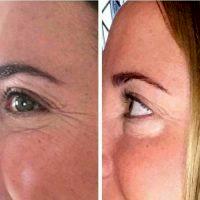
Botox Helps Prevent The Muscles That Cause Crow’s Feet From Contracting
Versatility of Botox
For aesthetic purposes, BOTOX® cosmetic is FDA-approved for the crows feet (lines that form on the sides of the eyes) and treatment of glabellar lines (frown lines between the eyebrows, aka “11s”).
There are also other neuromodulators (such as Dysport and Xeomin) which can be also be used to treat various parts of the face.
The neuromodulators are most effective for treating dynamic wrinkles (or wrinkles that form when showing expression such as smiling, frowning, etc).
While they have specific FDA indications, a properly trained physician can use they medications off label to treat bunny lines (wrinkles on the nose), smoker’s lines (fine lines around the mouth), shape the jaw line (for people with enlarged masseter muscles), forehead wrinkles, mild brow drooping (“a chemical lift”), webbing in the neck due to platysmal bands, etc.
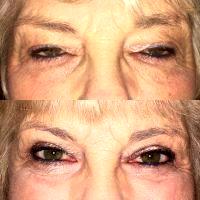
Can Botox Be Used Under The Eyes
The key is to find a physician who has extensive training and great anatomic knowledge to get the best results and minimize side effects. (Neel Kumar, MD, Tulsa Oculoplastic Surgeon)
The most common areas I treat with Botox are:
- Forehead wrinkles.
- Frown lines.
- Crow’s feet.
The muscle bands in the anterior neck. (Francis X. Fleming, MD, Kennewick Plastic Surgeon)
Botox is a product that relaxes muscles and keeps them from contracting. Wrinkles around your eyes (crows feet), between your eyes (frown lines or sometimes called 11’s) and wrinkles on your forehead are in my opinion the three optimal places to use botox for wrinkles.
Think of a wrinkle as a piece of paper that is folded over and over until the line shows even when it lays flat. Botox is simply preventing muscle contraction (the folding) and thus delaying and softening wrinkles.
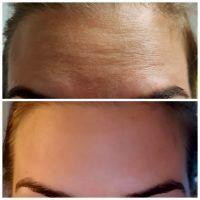
Results Generally Will Last About Three To Four Months
Botox (like dysport) works best in the thinner skin of the upper face vs the thicker skin of the lower face where fillers work better. (Jack Peterson, MD, Topeka Plastic Surgeon)
Common Areas for Botox Injections
The common areas of injection of Botox are the frown region, crows feet and the forehead region. Botox is used to treat the gummy smile by blocking the lip elevators. There is some use is lip lines but dermal fillers will give you a more predictable result. (Robert W. Sheffield, MD, Santa Barbara Plastic Surgeon)
Botox works well for dynamic wrinkles (the kind you notice when you move your face) and can have some effect on mild or superficial static wrinkles. It is less effective for very deep static wrinkles and for fine lines on the lower lids or around the lips.
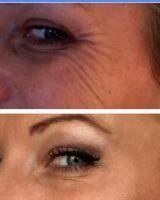
The Appearance Of Fine Lines
In those cases, either laser skin resurfacing or potentially filler would work bettter. (Mahsa Sohrab, MD, New Haven Oculoplastic Surgeon)
Botox for overall facial rejuvenation
If a person truly has all over facial wrinkles Botox can be injected in the forehead, glabellar, around the eyes, sides of your mouth and platysma lines in your neck. This could also be augmented by fillers in the nasolabial folds and upper lip area to enhance the entire face.
Be sure you consult with a certified injector such as a board certified plastic surgeon or dermatologist. (Rod J. Rohrich, MD, Dallas Plastic Surgeon)
Best Areas For Botox?
Botox is simply amazing at what it can do, and it can be used for various areas of the face. Typical areas are the eyebrow frown lines, around the eyes, forehead lines, nose/bunny lines, downturned smile corners, lip flip (to pucker lips), treatment of “golf ball chin” (those dimples when you laugh or smile on the front of the chin under the lips), reducing thickness of the jaw muscles, reducing bands of the neck and much more.
If you have many lines all over the face, most likely you would want to look into treatment of resurfacing lasers (like Pixel, Fraxel, and maybe Clear and Brilliant) that can target multiple fine lines all over the face as opposed to doing a ton of Botox all over the face.
Please refer to your treating physician for best options for your specific needs. (Edward Stokes, MD, West Hollywood Physician)
Botox can be injected to any muscle to reduce it’s mobility. For first timers a good area to start is the glabella (mid forehead) and the periocular areas (around the eyes). The mid forehead often gets “11s” which are vertical lines from the corrugator muscle or a horizontal line which is from the procerus muscle.
Botox treats these areas very well. Around the eyes people often get radially oriented lines on the outside of both eyes. This is because the orbicularis muscle is a sphincter type muscle and pinches the skin in this direction.
Wrinkles are always perpendicular to the orientation the muscle contracts. Lasers are also an option for those very fine lines in the skin. (Benjamin Caughlin, MD, Chicago Facial Plastic Surgeon)
Botox can be used on various areas of the face, ranging from the forehead to the frown lines between the eyes and the crows feet. I commonly also use Botox to treat the lips (smokers lines) and occasionally on the chin area for people who tend to dimple their chins.
Your provider can guide you through to what product(s) will best meet your aesthetic goals. However, as a general rule Botox usually is utilized in the upper portion of the face and fillers are mostly utilized in the mid/lower face. (Pooja Malik, MD, Cherry Hill Family Physician)
Best places for Botox
The most common places for Botox administration are the glabella – it is the area between the eyebrows that cause the “11” lines when you furrow your eyebrows, the forehead, and the “crows feet,” the area that wrinkles at the corners of the eyes.
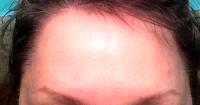
BOTOX Facelift, This Procedure Involves An Experienced Practitioner Placing Injections
Less common locations for Botox are around their lips, chin area, or jawline if there is significant prominence. (Lesley Rabach, MD, New York Facial Plastic Surgeon)
Botox Can be Used in Different Areas of the Face
Botox can be used on different areas of the face. The most common areas are the forehead, the frown lines between your eyes and the crow’s feet. It can also be used to soften the wrinkles of your upper and lower lips.
Botox can also be used under the eyes for a Botox eye lift. Here at Ethos Spa we also use Botox for lower face rejuvenation. (Hardik Soni, MD (not currently practicing), Summit Emergency Medicine Physician)
